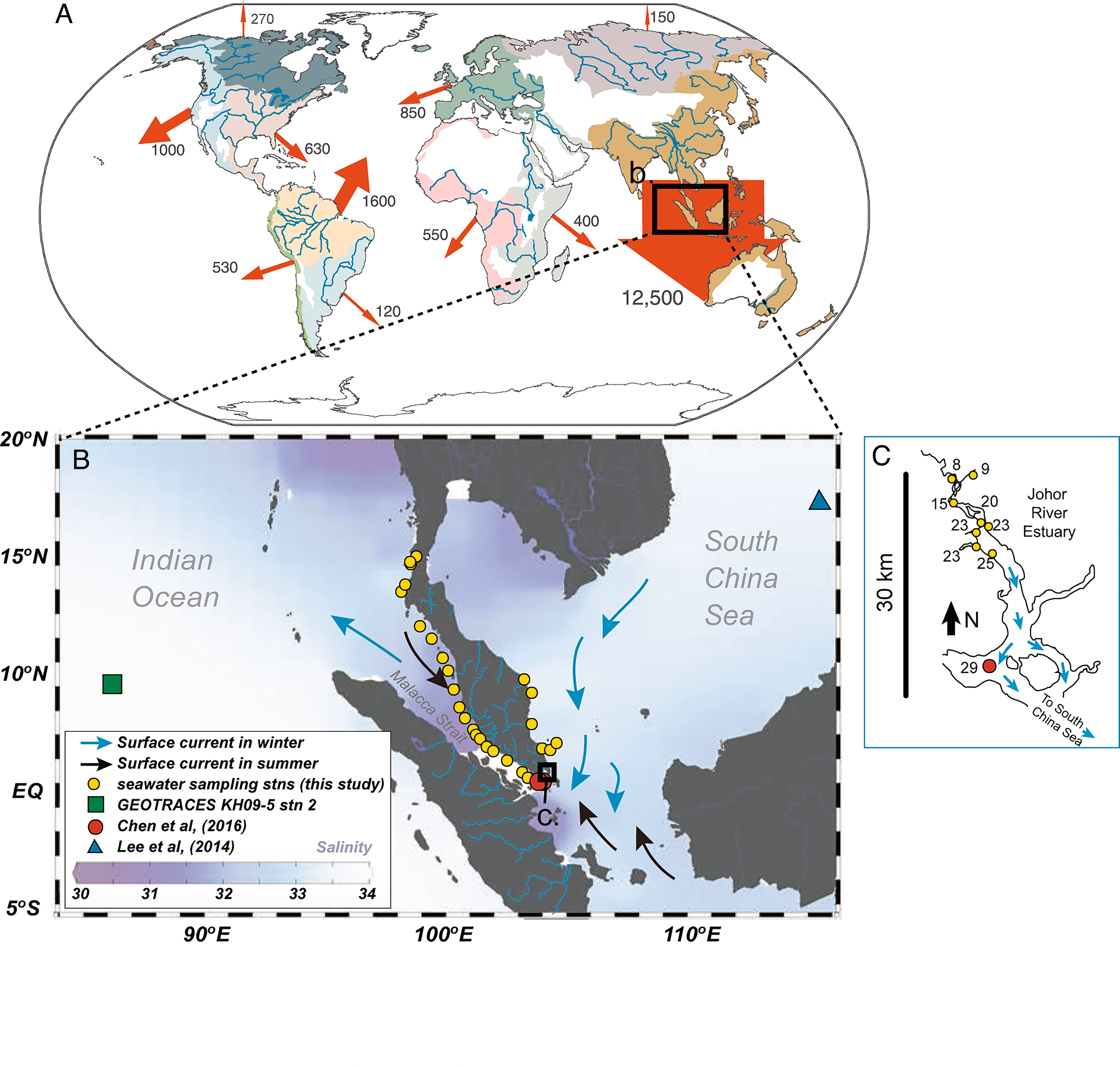边界交换补齐海洋铅循环拼图
Boundary exchange completes the marine Pb cycle jigsaw
作者: Mengli Chen, Gonzalo Carrasco, Ning Zhao, Xianfeng Wang, Jen Nie Lee, Jani T. I. Tanzil, Kogila Vani Annammala, Seng Chee Poh, Federico M. Lauro, Alan D. Ziegler, Decha Duangnamon, Edward A. Boyle
期刊: PNAS
Material fluxes at the land–ocean interface impact seawater composition and global cycling of elements. However, most attention has been focused on the fluvial dissolved fluxes. For elements like lead (Pb), whose fluvial particulate flux into the ocean is two orders of magnitude higher than the dissolved counterpart, the role of particulates in elemental cycling is potentially important but currently less appreciated. Using both chemical analyses on samples collected from around equatorial Southeast Asia and model simulations, we show that particulate-dissolved exchange is an important mechanism controlling the concentration and isotopic composition of dissolved Pb in the ocean. Our model indicates that Pb contributed from particulate-dissolved exchange at ocean boundaries is larger than, or at least comparable to, other major Pb sources to the seawater before the Anthropocene, when the anthropogenic Pb was absent. Our work highlights the importance of boundary exchange in understanding marine element cycling and weathering-climate feedback.
Figure 1. (A) Fluvial discharge of sediments to the global ocean replotted from ref. 27. Numbers are mean annual suspended sediment discharges (million tons/year). Colour shades represent the illustrative catchment regions with major rivers highlighted. (B) The seawater sampling stations in this study (yellow circles) and seawater stations in the literature are shown for comparison [red circles, green rectangle, blue triangle (26, 28, 29)]. The rivers relevant to the sampling sites are highlighted in blue. The surface ocean currents are marked with arrows. (C) Sampling stations in the Johor River estuary with salinity values (pss) marked next to the station locations; the estuary is highlighted with a square in panel B.
陆地与海洋交界面的物质通量影响着海水成分和元素的全球循环。然而研究大多关注的是河流溶解通量。对于像铅(Pb)这样的元素,其颗粒态形式的河流入海通量是溶解态的数百倍,颗粒物在元素循环中具有潜在的重要性,但目前还没有得到足够的重视。通过对东南亚地区赤道附近收集的样品进行化学分析和模型模拟,我们发现,颗粒态-溶解态交换是控制海洋中溶解铅浓度和同位素组成的重要机制。我们的模型研究表明,在人新世之前,海洋边界的颗粒态-溶解态交换贡献的铅多于或至少与其他主要的海水铅来源相当,而当时人为铅源是不存在的。我们的研究凸显了边界交换在理解海洋元素循环和风化-气候反馈机制中的重要性。
(实习生齐千萌编译)









